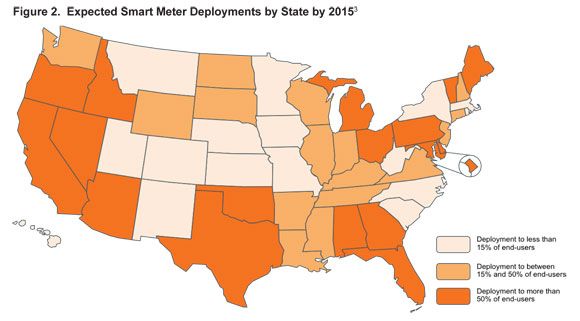More than 46 million smart meters have been installed in the U.S., according to a report from the Edison Foundation, with more than 40 percent of American households now having a smart meter.
The penetration of digital two-way devices means that there are more than 1 billion data points being collected daily (if hourly data is collected), and likely more. “The era of pilots is a distant memory," declare the report authors.

Although some smart meter opponents would decry that figure as a frightening indication of the scale of information that could be used to spy on what’s going on in the home, the reality is that many utilities aren’t doing much with the data -- let alone designing a nefarious, Big-Brother-style grand plan to control our dishwashers.
In a recent blog post by Opower, the company argues that this trove of data can help deliver tools and insight to customers to “give them unprecedented control over their energy use and cost.”
Ideally, utilities will use the data for lot more than just residential applications. The report highlighted Oklahoma Gas & Electric’s work on volt/VAR optimization that relies on some data coming off of smart meters and will deliver a 75-megawatt load reduction by 2018. NV Energy is working with BuildingIQ to drive energy efficiency in commercial buildings through HVAC optimization that will save 75 megawatts of energy by 2015.

For many utilities, however, there is a vast challenge in dealing with the data tsunami coming from the meters and other digital devices on the grid, and in running complex analytics to deliver value to the utility and customers.
At Greentech Media’s Soft Grid conference, to be held October 1-2 in San Francisco, utilities and industry experts will discuss how to build a business case for big data and analytics, and how to get the most from information coming off advanced metering networks.
For more information, and to register for the Soft Grid, click here.



